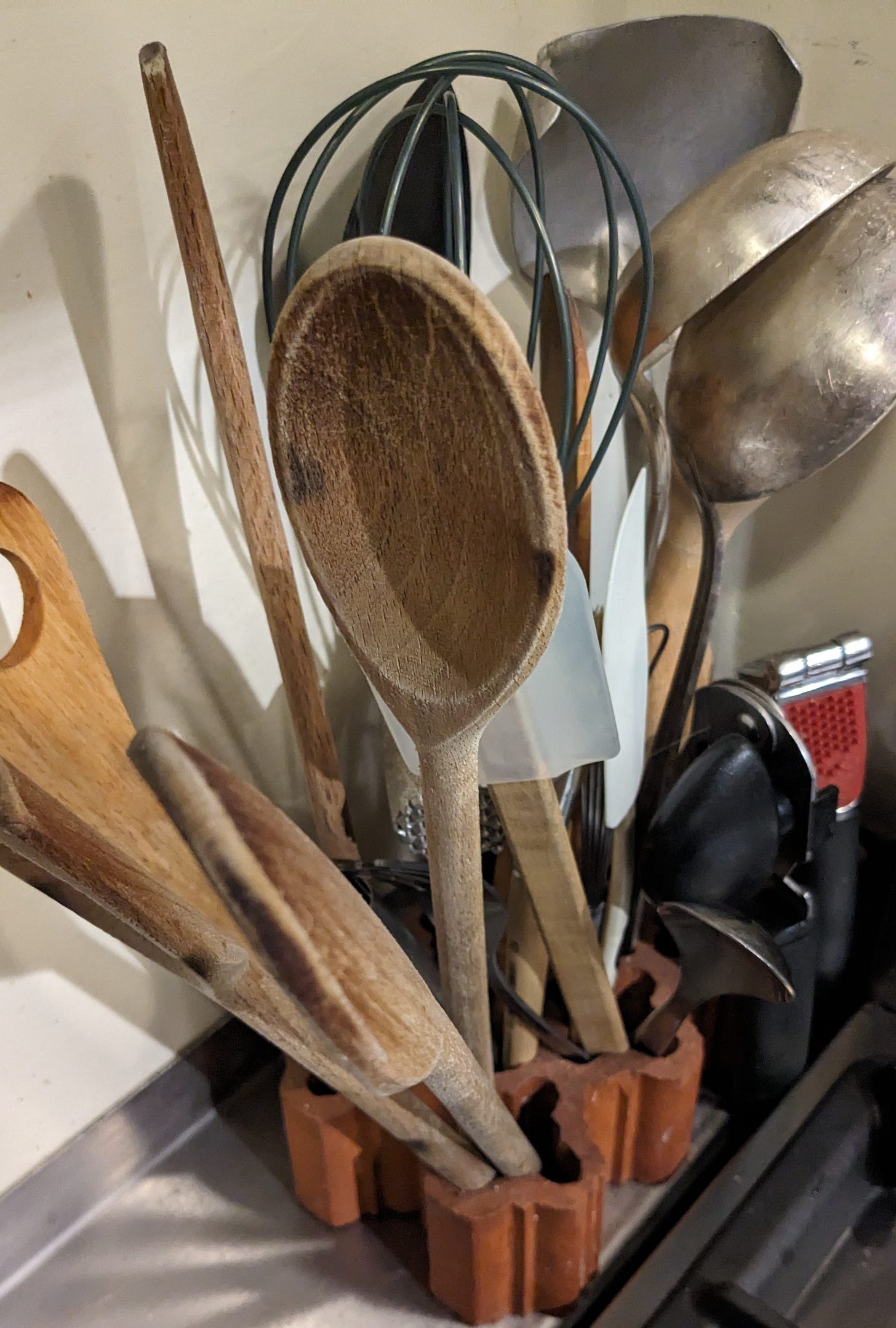Hooray for Marmite, up-cycled food hero!*
A recipe for easy red onion pickles made in a moment
(*or villain?)
I can’t think what the activity was known as before it was called ‘upcycling’ but I was a fan of it. I made my favourite moth-holed sweaters into cushion covers. Linen sheets became curtains, necklaces dangly earrings. I sawed the legs off dining tables and turned them into coffee tables. A ventilation brick holds my kitchen tools.
Yet I’m not sure I’m a fan of the idea of upcycled food. It’s become A Thing, to the point there are now global surveys focusing on it, 37 so far. These have established I’m not alone in my dislike. Apparently, people aren’t taking to upcycled food with the enthusiasm its creators hoped for. I appreciate this is a shame: acceptance would help mitigate the problem of food waste. 28 percent of agricultural land goes into growing food that is never eaten, says US-based company Upcycled.
Upcycling concerns the repurposing of the by-products of perfectly acceptable comestibles: meat and seafood, grains, olives, wine-making residues. Analysis of the surveys have established the embrace of upcycled food is - not very much. In some countries, baby boomers were the most likely to try it, Gen X the least. In others, the reverse. The eaters who understood the least about ’upcycled food’ were the Brits at 10 percent, while the most knowledgeable were the Italians at 61 percent. More women than men were inclined to buy upcycled food, though I’m not sure what that proves. Aren’t more women than men still the gender more commonly expected to fill the fridge?
So much depends on appealing nomenclature. ‘Upcycled food’ to me smacks of an unpleasant splat on the sidewalk. I am equally averse to its other term, ‘agricultural side stream’, which sounds entirely inedible, something related to the drainage of a cement feedlot crammed with cattle. Yet this descriptive covers turning corn cobs, oat hulls, wheat straw, grains left-over from making beer into food of a different sort, along with waste from molasses, dairy and baking, all perfectly wholesome.
My favourite agricultural side stream may be Marmite. It’s made from concentrated yeast extract which is a by-product from brewing beer therefore an upcycled food. This vegetarian yeast extract, Britain’s beloved (and despised) spread for hot buttered toast, contains barley, wheat, oats and rye, vegetable juice concentrate, and at least five vitamins. In culinary equivalence, its best friend is the anchovy, which I describe as ‘the Marmite of the sea’, loved or loathed as it also is. Like an anchovy, Marmite works the same magic in cooking, if only you don’t tell your resistant diners you’ve used it. (Adventurous Americans will find it in the international aisle of larger supermarkets, Rodman's in Washington DC, and online.)
It is Britain’s ‘umami’, adding a rich meatiness to slow-cooked stews and even tomato-based sauces like Bolognese, a secret staple in the professional kitchens of more Michelin chefs than you can list on one hand. Some, like Nottingham two-star chef Sat Bains, openly reveal it as an ingredient - in his truffle-and-chicken-skin millefeuille. While chef at Roux of Parliament Square, Steve Groves added Marmite to a spring recipe of asparagus with scallops and tiny Jersey Royal potatoes. Some chefs rub it into a side of beef before roasting. Tom Aikens, who had two Michelin stars by the age of 26, makes his sourdough with a touch of Marmite. Other chefs serve their breads with a butter that has been lightly flavoured with Marmite. Nigella has a recipe for Marmite as a sauce for spaghetti.
It may be the most English of ingredients (Aussies prefer Vegemite, a vegetarian version Brits scoff at much as the Aussies scoff at Marmite) but it was invented in the late 1800s by a German, nobleman Justus von Liebig. One of the founders of organic chemistry, he discovered brewer’s yeast could be concentrated, bottled and eaten.
The Marmite Food Extract Company was formed in 1902, in Burton-on-Trent in England’s Midlands, with the by-product yeast provided by the Bass Brewery. The spread took off and five years later, a second factory was built, in Camberwell, South London. Rich source as it is of vitamin B complex, once Casimir Funk (not the name of a band) coined the name ‘vitamine’ in 1912 for the early 19th century’s discovery of vitamins and their role in health and disease, Marmite received a massive boost in popularity. Beriberi, caused by a deficiency of vitamin B, was common during World War I and British troops were issued Marmite as part of their rations. In the 1930s, English scientist Lucy Wills used Marmite to treat mill workers in Mumbai suffering from a form of anaemia, the folic acid in Marmite identified as the active ingredient. When workers in Suriya-Mal in Sri Lanka succumbed to malnutrition brought on by the 1934-5 malaria epidemic, they were treated with Marmite.
It must be the only food that has generated a video tips ad on how to eat it. And how not to eat it.
There is even a TV commercial with an expectant mother eating Marmite before her scan affecting the reaction of the unborn baby.
An unchallenging way to road-test Marmite is to make a toasted cheese sandwich with a slight smear of Marmite over the butter and under the cheese. To elevate the sandwich even more, serve it with these pickled onions on the side.
They go brilliantly with smoked mackerel pate, rillettes, or, most famously, with the smoked eel sandwich spread with cream of horseradish that is one of the signature dishes of the wonderful Jeremy Lee of Quo Vadis and author of Cooking: Simply and Well, for One or Many. I suspect he also invented these pickled onions, a far cry from the cheek-puckering balls sold in retro pubs.
3 small red onions sliced thinly into rings
300 ml/10 fl oz cider vinegar
3 tablespoons golden caster sugar
1 tablespoon sea salt
6 black peppercorns
6 coriander seeds
1 star anise
1 bay leaf
Put the onion slices in a sieve. Bring a kettle of water to the boil then pour it over the onions and drain well, shaking the sieve. Once cool enough to handle, pack the onion rings into a 500g/1 lb sterilised jar (see tip below).
Put all the remaining ingredients into a pan and bring to a simmer, stirring to make sure the sugar and salt have dissolved. Remove from the heat.
Pour the warm vinegar over the onions and seal. Cool, then chill and leave to pickle for 2 hours before eating. Will keep for 6 months unopened, or 2 weeks in the fridge once opened.









Pickled red onions are a favorite condiment for all manner of tacos and tostadas.
Now that was very interesting - I'd never heard of 'upcycled food'! Though I've ben a dedicated fan of Marmite for most of my life. Must try the pickled onions.